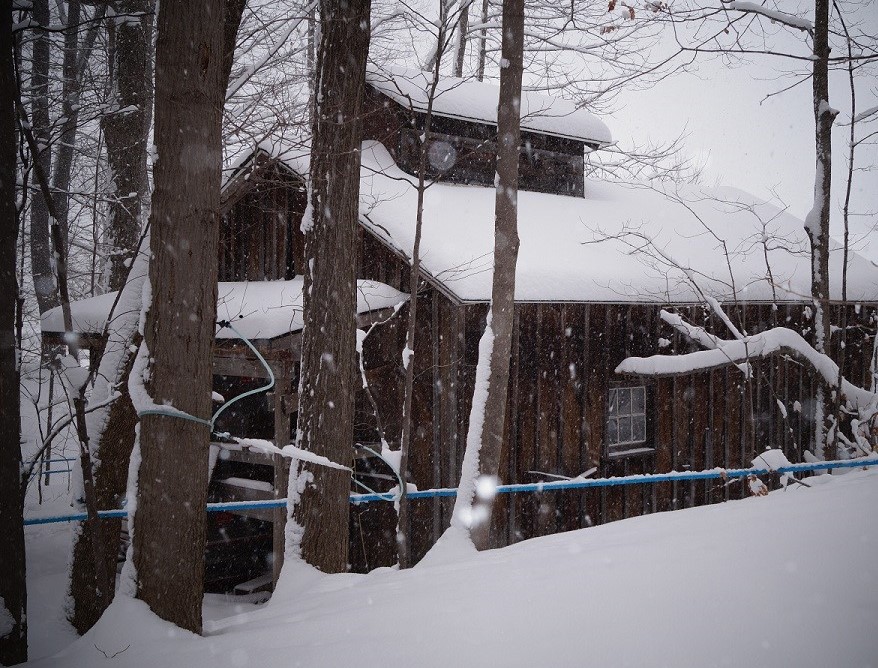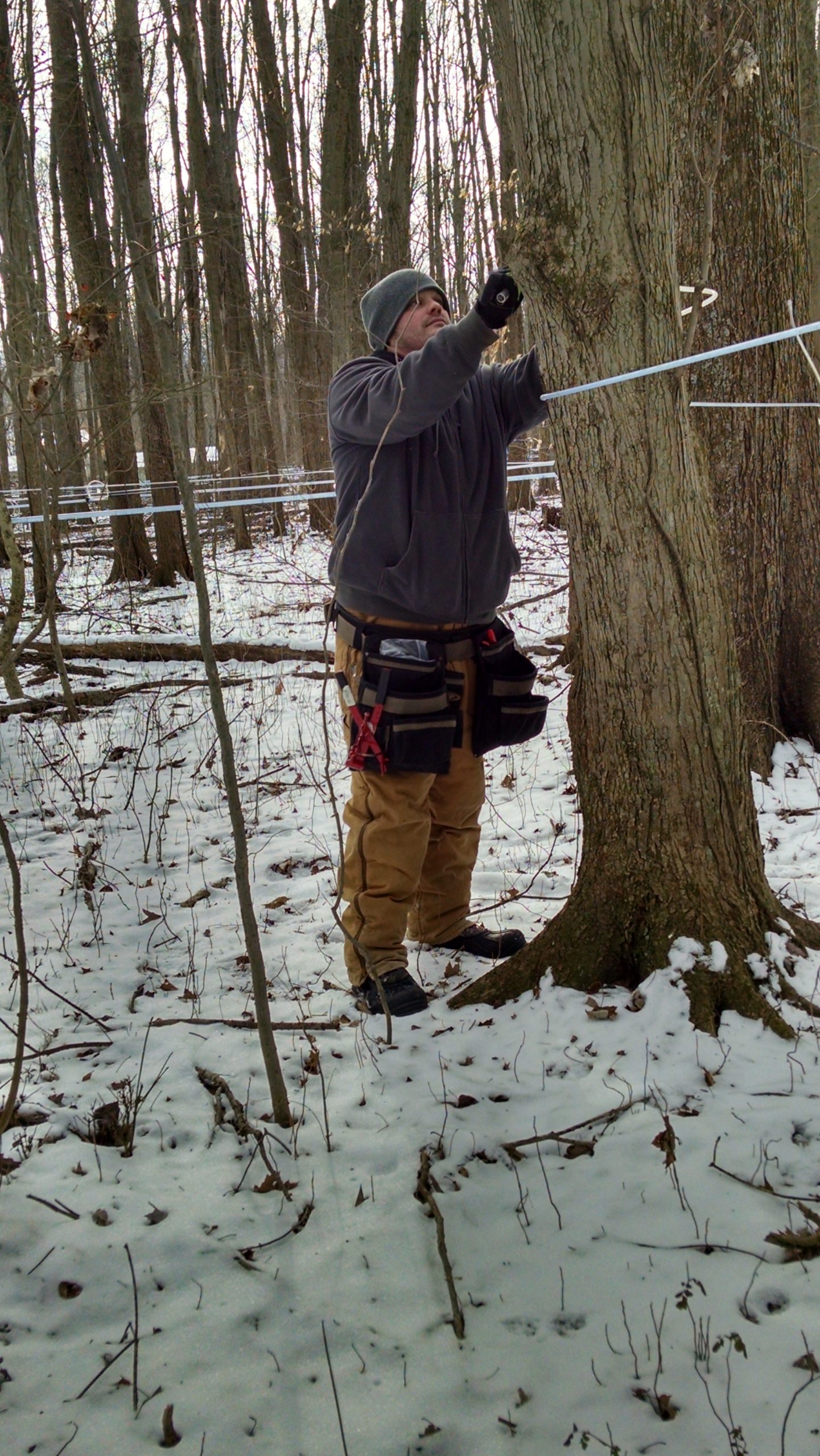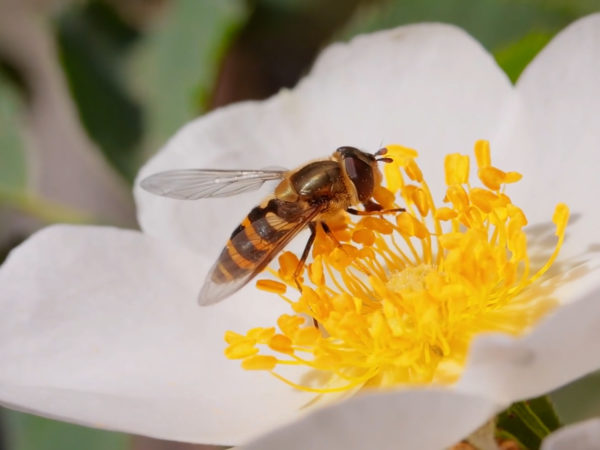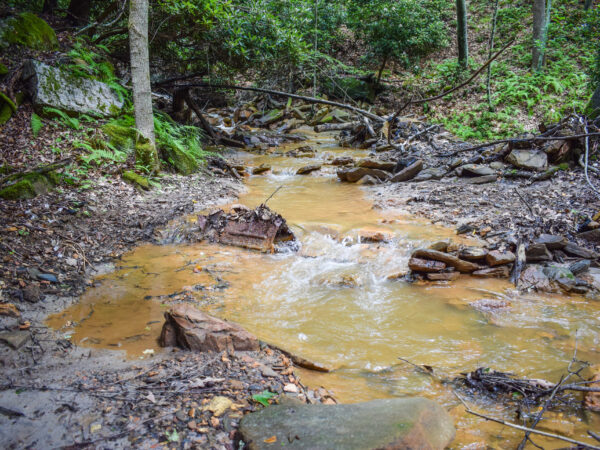
An area like the Great Lakes that has rain and higher temperatures in the summer, followed by a cold, snowy winter, is best suited for maple production.
But the Great Lakes maple season is evolving as climate change increasingly impacts maple syrup production with shorter harvest seasons, less sugar production and unreliable sap flow.
In a 2019 article about perceptions U.S. and Canadian maple syrup producers have towards climate change, a majority of the North American maple producers surveyed believed the “quantity and quality of maple sap is decreasing because of climate change, and about one-third missed the first sap flow of the season in recent years.”
For Richards Maple Products, based in Ohio, 2021 was not a great maple producing season because there was not enough moisture, according to their president, Jen Freeman. A poor sugaring season translates into a shortage of maple syrup for sale for Richards and other producers. And, while the retail price of maple is determined by each producer, Freeman anticipates price increases due to maple syrup shortages and an increase in the cost of packaging.
The same is being seen on the other side of the Great Lakes. In Wisconsin, the sugaring season, or the period of time sap is harvested to make maple, has “shifted considerably earlier in the past decade,” said Jeremy Solin, maple syrup project manager at UW-Madison Extension.
Even Canadian maple production declined 21% last year, according to Statistics Canada.
“The primary climate needs of maple for sap production are consistent periods of freeze-thaw conditions [and] winter dormancy,” Solin said.
The freeze-thaw cycle involves the presence of snow and moisture, two elements that help create an enzyme that releases sugar into the sap and pressure in the trees that allow sap to flow. Winter dormancy is needed for trees to store sugars. Sap can then flow for 30-72 hours at a time, leading to a sugaring season of roughly 4-6 weeks. Spring is the ideal time for the freeze-thaw cycle to occur as temperatures fall below freezing at night and rise above freezing during the day.

Harvesting maple sap at Richards Maple Products in Geauga County, Ohio (Photo Credit: Jen Freeman/Richards Maple Products)
But changing spring conditions and warmer winters are likely to shift and shorten the sap collection season, according to the USDA Climate Change Resource Center.
A 2016 study indicated 59% of maple producer have experienced earlier tapping seasons. Earlier springs also mean shorter harvesting times.
Dartmouth College released a study in 2019 that showed that by 2100, maple harvest season is likely to shift one month earlier than the previous two centuries.
This warming trend could spell real long-term trouble for maple producers in the Great Lakes region.
In addition to changing harvest seasons, since maple production is so heavily reliant on weather conditions, any variation in the pattern can impact how much or how little is yielded in any given harvest.
Dr. Joshua Rapp of the University of Massachusetts Amherst asserts that, along with the harvest season, tree health as well as the quality and quantity of sap available are impacted by climate change. As temperatures rise, and snowpack reduces, maple trees have developed symptoms of dieback, or the gradual death of branches which can cause long-term damage.
Sugar storage in trees can be reduced when summers are hotter and more water would be needed to keep the trees hydrated, said Professor Ines Ibanez at the School for Environment and Sustainability at the University of Michigan.
Maple syrup production involves quite a bit of water, but most of the water used is generated by removing it from the sap itself.
“Sap comes of the tree as mostly water [and just approximately] 2% sugar,” Solin said. The sap is cooked to remove the water, and the steam from that is used in cleaning processes.
Any additional water that might be needed comes from private wells often on the property of the producer.
Emerging adaptations for emerging problems
Conditions are forcing maple producers to adapt their production methods to address emerging challenges.
Forest management is a cornerstone to effective sap collection and maple harvesting. A study surveying U.S. and Canadian maple producers concluded that maple tree management, or sylvicultural, was the leading way producers would try to address climate change issues.
Improving and enhancing sanitation techniques was another way noted to help prolong the viability of taps and hoses that draw the sap from the tree. Those reliant on vacuum systems in their harvesting were more likely to see sylviculture as the preferred way to stem climate change impacts on their sugar bush. The vacuum system has replaced the traditional method of tapping the side of a tree and hanging a bucket to collect sap.
Vacuum systems, now commonly used by maple producers, relies on tubing to extract sap out of trees and collect it into what is known as the sugar shack, where the sap is collected and heated in large vats until it turns into syrup.
Another way to address the impact of climate change is to help promote the type of syrup that is produced later in the sugaring season. In a survey done by the U.S. Forest Service Climate Change Resource Center, “70% of maple producers would like to see the promotion of late season or “buddy” syrup (so-called due to the off flavor which develops as the trees break bud).” It’s currently not marketable as maple syrup because of industry quality standards but could be used as a sweetening agent or other supplement.
As much as producers may want to implement ways to adapt production to a changing environment, barriers do exist making such adjustments difficult. Cost is a large factor when producers are considering new interventions. Producers also cite a lack of research on best practices as well as a need for technical support to effectively adapt their harvesting methods.
Academic experts are already thinking about the next questions to be answered.
The impact of climate change on tree health, the prevalence of invasive species and the sugar content of sap are all areas that need to be addressed, according to Solin.
And the potential impacts of a reduced snowpack and changing soil frost on maple syrup health and production remain a question for Stephen Handler, a climate change specialist at the Northern Institute of Applied Climate in Michigan.
“We now have had two poor producing years in a row,” Freeman said.
Yet, she and the team at Richards Maple Products will not allow a difficult harvest year to impact the quality of their maple syrup.
“We have standards for quality,” Freeman said. “Quality will not be compromised due to a short production year.”
Catch more news at Great Lakes Now:
Bugs, Shorter Winters, Climate: Great Lakes vineyards face changing circumstances
Great Grapes: Soil and climate have made the Great Lakes a top wine-producing area
Featured image: A sugarhouse at Richards Maple Products in Geauga County, Ohio (Photo Credit: Jen Freeman/Richards Maple Products)




